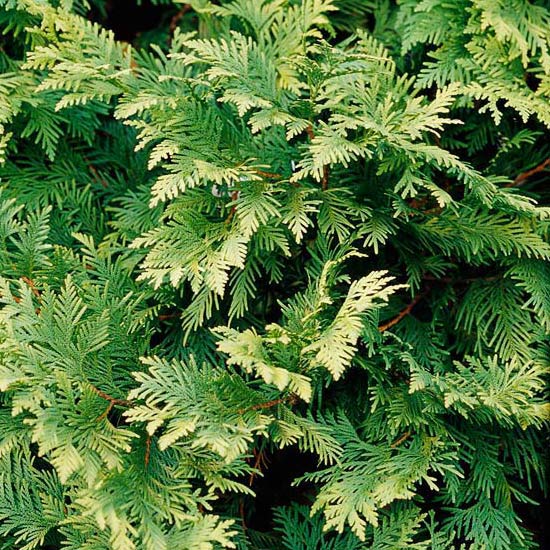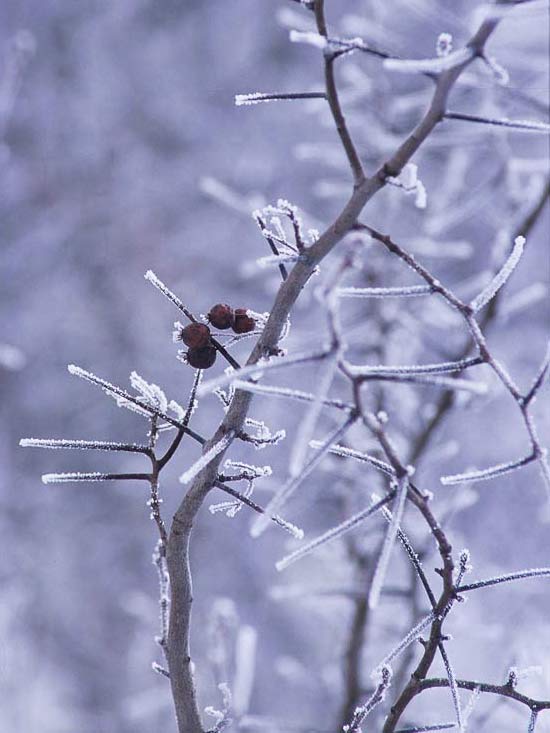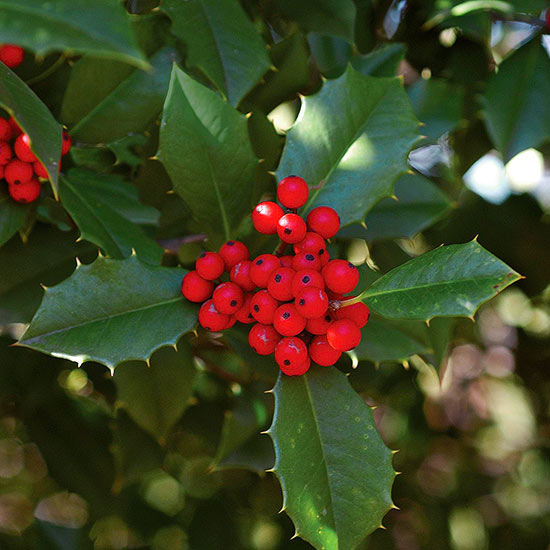





Winter in the North can be a gardener's worst enemy: There's nothing to plant, little outside work to do, and no plants that bloom outdoors. Fortunately, trees can come to the rescue, with color, texture, height, and sometimes berries. Here's how to choose the best trees for winter landscape interest.
Find trees to add fall color to your landscape.
continue reading below
When most people think of the best trees for winter landscape interest, they naturally think of evergreens. There's good reason: In the Northern Hemisphere, evergreens, or conifers, typically retain their needles (or leaves) year-round and remain colorful throughout the winter.
When it comes to evergreens, people aren't aware of how many needle types there are; their diversity makes them one of the best trees for winter landscape interest. "A blue spruce looks very different than a cedar," says Luana Vargas, educational development manager for the International Society of Arboriculture. "There are different needle shapes and colors, and if you are somewhere that gets snow, some of the branches are really pretty when covered with snow."
Some of Vargas's favorite evergreens for winter landscape interest include cedars for their lovely architecture and display quality when it snows, and firs and spruces for both trees' conical shapes that mesh well with the landscape. Firs and spruces are also commonly used as Christmas trees, making them a traditional favorite for winter landscape interest. "However, they can get really big, so size is a consideration," Vargas says.

Deciduous trees, or those that lose their leaves in the fall, are not often considered the best trees for winter landscape interest. But smart deciduous tree choices can add four-season beauty to your yard.
One characteristic to look for, Vargas says, is branch architecture, which can also be affected by pruning patterns. "Trees that have interesting branch architecture -- especially clusters of dense, fine small branches -- are absolutely gorgeous, especially if snow falls. They look almost like sculptures," Vargas says.
Bark color and texture, as well as berries that stay on the tree, are important factors for deciding the best trees for winter landscape interest. Some of Vargas's favorites are:
Osage orange: It's great for its branch architecture, Vargas says.
Ginkgo: This ancient tree has particularly pretty leaves the rest of the year.
Japanese maple: If you're looking for a smaller species, this tree can supply great architectural features, Vargas says.
Eucalyptus: "I really like the peeling bark of some species," Vargas says.
Birch: River birch and paper birch trees are some of the best trees for winter landscape interest for their color and texture.
Cherry: Some varieties can have a stunning wine-burgundy color bark.
Holly and Hawthorn: Some varieties of these trees have really interesting fruit in the winter, Vargas says, giving them an added plus for winter landscape interest.
Live in a warm-weather climate? Learn about adding palm trees to your landscape.

If you're planting a tree for winter interest, make sure nothing blocks your view of it, Vargas says, or choose a place that has a great winter view. "You might have different trees in your yard with focal points at different times of the year -- one species in the spring, another one in the winter, for example," Vargas says.
Before you invest in any tree, though, Vargas says to also consider location, site suitability, and mature size. The tree should harmonize with the rest of the landscape, of course, but aesthetic wishes shouldn't trump the trees best suited for your climate and available space. "Finding the perfect tree for a specific site is very hard. People might say that winter interest, fall color, interesting fruit, and bark are prioritizes, but it's rare to find a tree that has all of the characteristics that you want," Vargas says. "You have to be open to other possibilities. If the particular species you selected for aesthetic reasons doesn't fall within size constraints or weather conditions, look for another one that does. A tree that doesn't do well on the site will probably have a lot of pest problems. A dead tree is never a pretty tree."
Visit arborday.org for a guide to choosing the best trees for winter landscape interest for your climate and site conditions.
Browse beautiful shrubs with winter interest.
Copyright © www.100flowers.win Botanic Garden All Rights Reserved